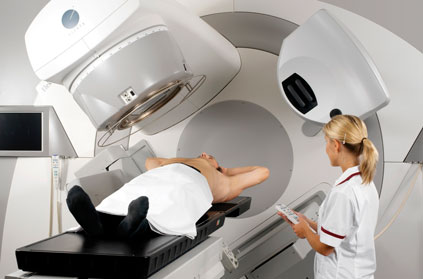Original Title: Long-Term Mortality in Patients With Radiation-Associated Coronary Artery Disease Treated with Percutaneous Coronary Intervention.
Reference: Reed GW et al. Circ Cardiovasc Interv. 2016 Jun;9(6).
Courtesy of Dr. Brian Nazareth Donato.

This retrospective, observational study included a total 314 patients undergoing PCI between January 2000 and December 2012. Patients were divided in two groups (1:1): atherosclerosis patients undergoing PCI vs. patients with history of radiation exposure undergoing PCI.
Baseline characteristics of both groups did not present statistically significant differences. The most frequent tumor was breast (60%), followed by lung (15%), Hodgkin’s lymphoma (14%), and non- Hodgkin’s (10%). Mean time between radiation exposure and PCI was 13 +/- 10 years, and 19 % of patients had received chemotherapy with cardio-toxic agents. 8% of patients were treated with balloon angioplasty, 39% with conventional stenting (BMS) and the remaining 53 % with drug eluting stents (DES).
During a mean follow up of 6.6 +/- 5.5 years post PCI, the radiation exposed arm presented 38 % overall mortality vs. 27 % in the control group (p= 0.04). Radiotherapy was an independent predictor of overall mortality (HR 1.85; CI 95% 1.21 – 2.85 p=0.004) and cardiovascular mortality (HR 1.70; CI 95% 1.06-2.89 p=0.03).
54 % of deaths in the radiotherapy group were cardiovascular while, in the control group, cardiovascular mortality rate was 46 %. (p= 0.045).
Stratified by PCI type, not using DES was a predictor of higher overall mortality and higher cardiovascular mortality in the radiation exposed patients, vs. the control group.
Conclusion
Prior radiation exposure in patients that develop coronary artery disease is presented as an independent risk of cardiovascular death. In this group, those undergoing balloon angioplasty or BMS stenting present even higher mortality. Even though this does not prove the association between this type of PCI and mortality, in patients with CAD and a history of radiation exposure, we should consider DES stenting, whenever possible.
Editorial Comment
The best revascularization strategy to treat radiation associated coronary artery disease is still under discussion, and the impact of radiation exposure in post PCI long term evolution remains controversial. This study adds information on a relatively large population and has good follow up. It is worth noting that conventional stenting lead to bad evolution, though the choice of BMS might have been determined by the existence of comorbidities, with higher mortality incidence than BMS itself.
Courtesy of Dr. Brian Nazareth Donato. Buenos Aires British Hospital, Argentina.




